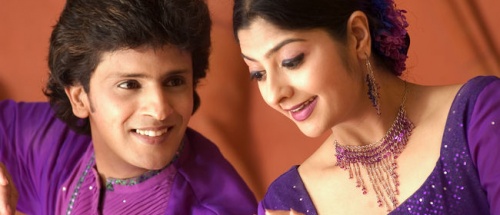Rang - Colours
Kavanagh Auditorium, Kavanagh College, 255A Rattray St, Dunedin
18/03/2017 - 19/03/2017
Production Details
RANG is a unique dance performance featuring Kathak, the North Indian Classical Dance, in a refreshing & pulsating manner. RANG gives you a glimpse of a rich Indian culture: the festivals, art & philosophy presented with high energy, enthusiasm & innovation. The perfectly orchestrated Indian music has been specially created for the production.
This is the NZ premiere straight after their performance at Adelaide Fringe. Nirupama & Rajendra are noted Indian Classical Dancers in Bharathanatyam and Kathak dance forms and they are from Bengaluru, India. They are actively involved as dancers, choreographers, teachers & producers for over 25 years. Nirupama & Rajendra’s performances are based on Indian classical dance tradition perfected over years of learning in music, literature and culture. They derive their movement vocabulary and inspiration from 5000-year-old scriptures such as Natyashastra and creatively use the state of the art to provide a wholesome experience. Nirupama & Rajendra’s performances have attracted audiences totalling over five million across five continents and have gained appreciation from people from all walks of life.
Gold coin entry for children. RANG is supported by Asia New Zealand Foundation
“They have a very infectious passion for Art” – A.R. Rahman – music composer and Oscar Winner
Dance , Dance-theatre ,
60 mins
So many colours
Review by Hannah Molloy 20th Mar 2017
It was a real coup for Dunedin’s Natyaloka to be able to present RANG – Colours by Nirupama and Rajendra from Bengaluru, India at the Dunedin Fringe Festival. These two performers, widely acclaimed in their art form, added another international dimension to the enormous Fringe programme.
RANG is a series of pieces based around the ancient Kathak (Northern Indian classical dance) dance forms. It opens with a beautiful stillness, the two artists silhouetted crisply on the stage. They seemed to tell a story of the development of a romance, from childhood disregard for each other to competitiveness to a burgeoning curiosity and unfolding attraction. Between each work, Nuirpama returned to the stage to explain the context and movement language of the next. I found this to be invaluable, as it allowed me to relax into the performance without trying to interpret the intricate hand and foot movements, particularly as she had explained the subtle differences between the northern Kathak and the southern Bharathanatyam. She added plenty of humour as well, commenting for example that women feel especially romantic during the monsoon.
There is no question that these two performers are exquisite to watch and masters of Kathak dance as well as of absorbing other dance styles into the traditional choreographies. They, for the most part, seemed to have a fluid and sympathetic awareness of each other on the stage, formed no doubt by having worked together for many years.
The final piece was a more contemporary work, described as a “vision of love and peace for the world” and it was the one that held my attention, with its graciousness and expression.
The tiny children around me were delighted with the show, commenting that it was “so pretty” with “so many colours” and some of them dancing below the stage, with quick surreptitious glances to see if the performers had noticed them.
Copyright © in the review belongs to the reviewer





Comments